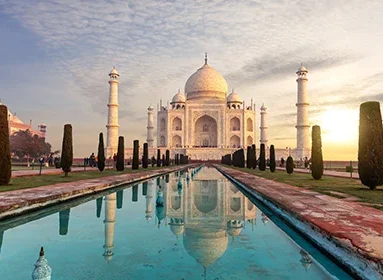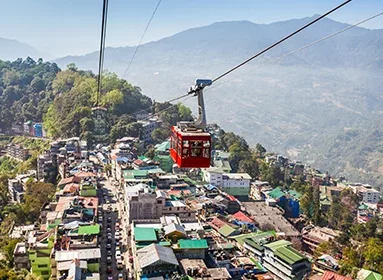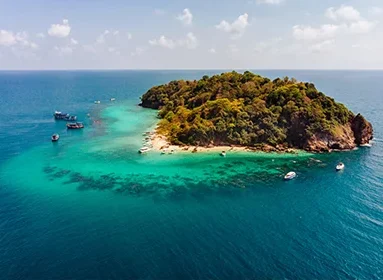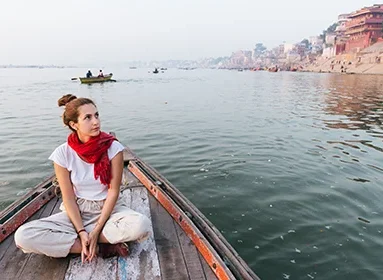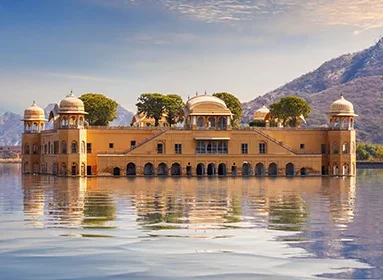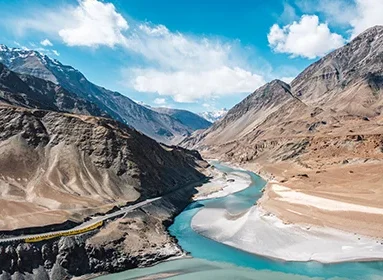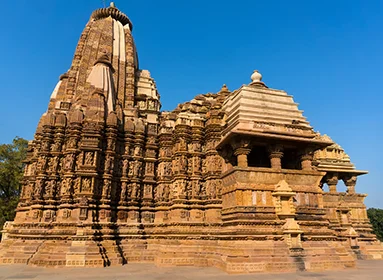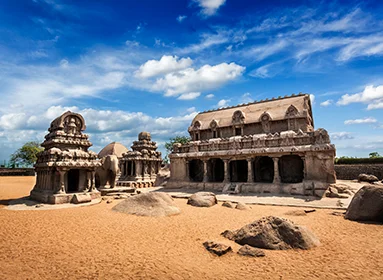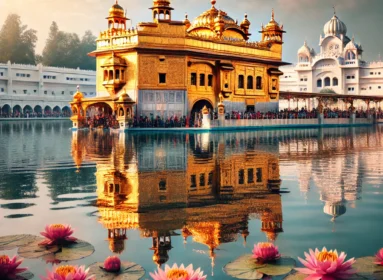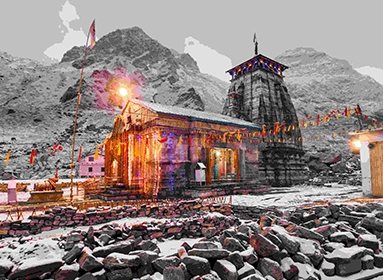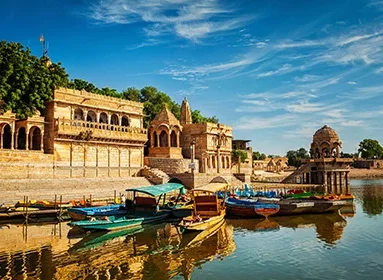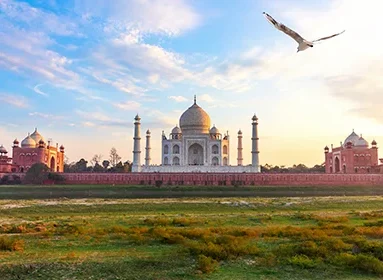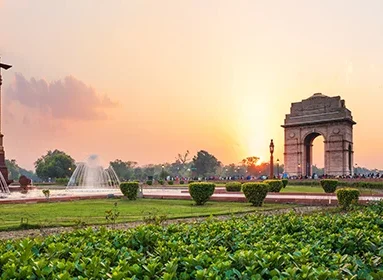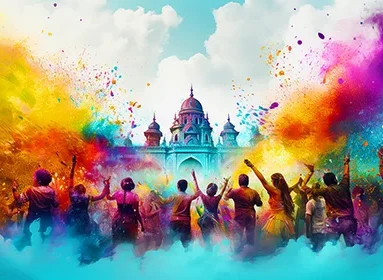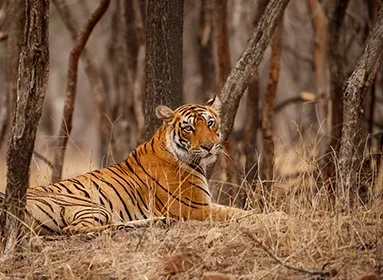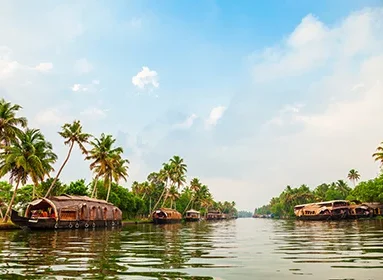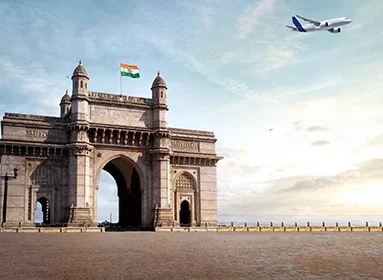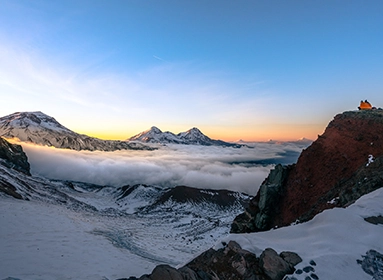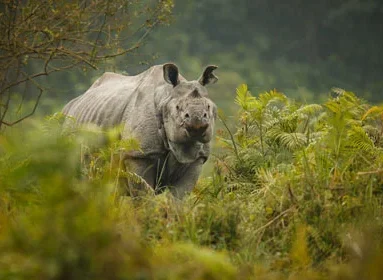

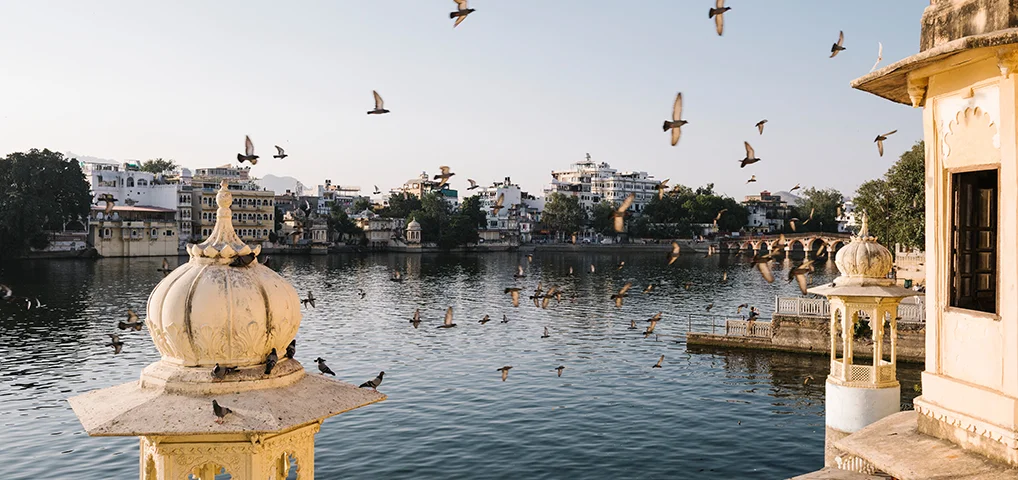
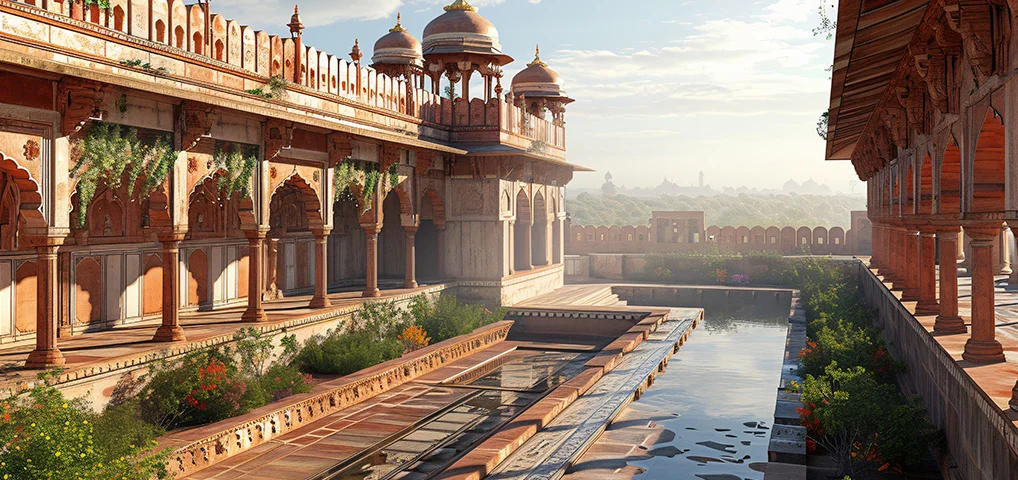
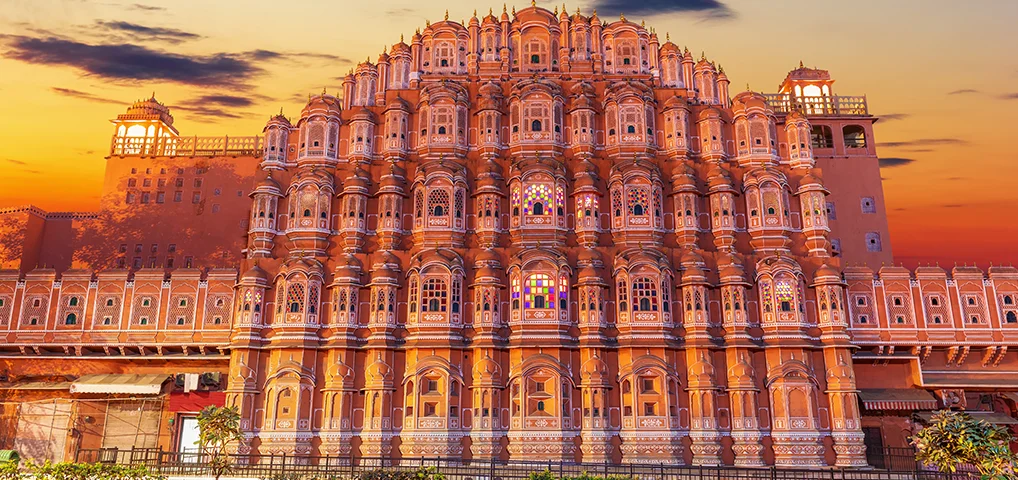
Overview
The Golden Triangle Tour is one of the most popular tourist circuits in India. It encompasses three iconic cities: Delhi, Agra, and Jaipur. These destinations offer a captivating glimpse into India’s rich history, stunning architecture, and vibrant culture.
| Day | Activity/Location |
|---|---|
| 01 | Arrive in Delhi |
| 02 | Delhi |
| 03 | Jaipur |
| 04 | Jaipur |
| 05 | Jaipur – Agra |
| 06 | Agra – Lucknow |
| 07 | Lucknow – Ayodhya |
| 08 | Ayodhya – Varanasi |
| 09 | Varanasi – Delhi |
| 10 | Delhi – Departure |
Inclusions
India’s stay inclusions can vary greatly depending on several factors, including:
- Accommodation type: Budget hotels, guesthouses, mid-range hotels, luxury hotels, resorts, homestays, and even unique options like palaces or houseboats all have different inclusions.
- Location: Urban stays may offer different inclusions compared to beach resorts or remote locations.
- Package deal: If you book your stay as part of a larger tour package, it might include additional features like meals, activities, or airport transfers.
Here’s a general breakdown of common inclusions you might encounter, but always check with the specific property before booking:
Basic inclusions:
- Accommodation: The room itself, with the designated bed type (single, double, etc.)
- Linen: Sheets, towels, and basic toiletries (may vary)
Common inclusions:
- Breakfast: Many hotels, especially mid-range and above, include a breakfast buffet in their rates.
- Wi-Fi: Most hotels offer Wi-Fi access, though speeds and connectivity can vary.
- Room service: The ability to order food and drinks to your room (charges may apply).
- Housekeeping: Regular cleaning and tidying of your room.
Less common inclusions (may depend on the property or package):
- Airport transfers: Pick-up and drop-off at the airport.
- Welcome drink: A complimentary beverage upon arrival.
- Meals: Some hotels may offer lunch or dinner buffets, or all-inclusive packages.
- Activities: Certain resorts may include some activities or tours in their package.
- Spa treatments: Luxury hotels might offer discounted spa treatments for guests.
- Fitness center access: Use of the hotel’s gym or fitness facilities.
Itinerary
Detailed Itinerary
On arrival in Delhi: Having cleared immigration, collected your luggage and passed through customs, please make your way towards the exit of the terminal building where you will see a
bank of people waiting for you. Amongst them will be Our Representative who will be waiting to greet you with a paging board with your name on.
You will be transferred to your hotel and assisted with check in. (Standard check in time at hotel is 1400 hrs). Rest at hotel after Lunch visit Akshardham temple
(TEMPLE COMPLEX ONLY). The complex features an Abhishek mandap, Sahaj Anand water show, a thematic garden, and three exhibitions namely Sahajanand Darshan (Hall of Values), Neelkanth Darshan (an IMAX film on the early life of Swaminarayan as the teenage yogi, Neelkanth), and Sanskruti Darshan (cultural boat ride). According to Swaminarayan Hinduism, the word Akshardham means the abode of Swaminarayan and is believed by followers as a temporal home of God on earth. (NOTE: Temple timings are from 10:00 am to 8:00 pm and the exhibition is open from 11 am to 6 pm. (Items NOT ALLOWED in the complex: MOBILE PHONES, CAMERAS, USB/PEN DRIVES, MUSIC DEVICES, ELECTRONIC ITEMS, WEAPONS, UMBRELLA, LUGGAGE, TOYS, PETS, FOOD AND DRINK, TOBACCO, ALCOHOL, DRUGS).
Return to hotel. Overnight at hotel
After breakfast, proceed for a full day sightseeing tour of Old Delhi and New Delhi.
Old Delhi is an ancient walled city, also known as Shahjahanabad. The city was founded in the 17th century during the reign of the Mughal emperor, Shah Jahan. Old Delhi once boasted fourteen great gates, mansions, the Red Fort, a congregational mosque and elegant gardens. Today, some of its ruins still stand making it a symbolic city as well as a famous attraction for tourists and locals alike.
Chandni Chowk meaning ‘moonlit square’ – is one of the city’s oldest, busiest and most famed shopping areas, built in the 17th century and originally intersected by (now defunct) canals that were designed to capture and reflect the moonlight. It’s a shopper’s paradise – with an eclectic diversity of wares ranging from traditional Indian sweets and other delicacies, to leather goods, electronics, intricately embellished saris and tailor-made suits. But even if you’re not up for any retail therapy, the sights, sounds and atmosphere of this pulsing, labyrinthine marketplace are captivating enough in their own right.
Raj Ghat is a memorial to Mahatma Gandhi, marking the spot where he was cremated after his assassination in 1948. Housed in an open-air garden area inside a walled complex, the memorial consists of a simple, flat black platform (reflecting the simplicity of Gandhi’s life) that is kept constantly decorated with an abundance of fresh flowers. An eternal flame burns at one end, symbolising the ever-lasting legacy of this great man. Two museums devoted to Mahatma Gandhi, his life and teachings are located nearby.
Qutub Minar Standing tall at 73-metres, the tower consists of 5 storeys with a flight of spiral stairs leading to its top. The walls are adorned with decorative motifs and Quranic inscriptions. At the foot of the tower lie other monuments of historical significance, such as the Quwwat-ul-Islam Mosque and the Iron Pillar of Delhi. The Amazing race Australia used this site as a pitstop in the second series. Visitors
can take advantage of stunning photo opportunities.
Humayun’s Tomb The mausoleum complex of Humayun, India’s second Mughal Emperor, was commissioned by his widow in 1565 and was the first garden tomb to be built in India, taking seven years to complete. Humayun had travelled widely in Persia and Central Asia during his lifetime, and many of the architectural principles he brought back from these journeys were incorporated into the building at his wife’s instructions. With its double domes, decorative inlaid marble and vast garden with pools connected by channels, this 16th Century building set the stage for the style that culminated in the Taj Mahal almost 100 years later.
Overnight stay at Delhi
This city is famed for being India’s first planned city featuring a multitude of pink terracotta buildings within the walled historic centre, earning it the nickname,’The Pink City’. Jaipur falls within the Golden Triangle, a popular tourist circuit, which includes Delhi, Jaipur and Agra, and serves as a gateway to the neighbouring desert cities of Jaisalmer and Jodhpur. This colourful city is a combination of tradition and modernity and offers visitors vibrant bazaars, lavish palaces and ancient temples. The salmon-hued old city is home to the opulent City Palace, encompassing an impressive assortment of palatial structures, sprawling gardens, courtyards and buildings. Don’t miss the fairytale splendour of the Amber Fort, set against the backdrop of the arid landscape.
Morning, after breakfast, you will drive to Jaipur (260 Kms/5-6 Hrs approx). Upon arrival, transfer to the hotel. Check-in at hotel.
In evening visit Chokhi Dhani, an ethnic village-style resort celebrating rural Rajasthani life.
❖Explore independently to see classic Rajasthani huts, craft demos, and live entertainment.
❖ Watch folk dances, ride a camel, see puppet and magic shows, and let the kids enjoy the play parks
❖ Learn about Rajasthan’s rich rural heritage and customs Savor
❖ a traditional Rajhastani dinner at a village restaurant
After breakfast, enjoy Full day sightseeing tour of Jaipur covering Amer Fort, City Palace and the Observatory and a photo stop at Hawa Mahal “Palace of Winds”. Take a shared Jeep ride to reach Amer Fort.
Amer Fort, officially known as the ‘Amer Palace’, is one of the most famous forts of Rajasthan attracting around 4000 to 5000 visitors a day during peak tourist season. The palace was named after the small town of Amer, where it is situated – only eleven kilometres from Jaipur. Perfectly picturesque, this 16th century hillside residence is well preserved, boasting grand pavilions and mirrored halls that open onto flourishing gardens and courtyards. Although the palace’s main construction started in 1592 by Maharaja Man Singh, it was added to over the years by successive rulers and continued to be occupied by them until Jaipur was built.
Hawa Mahal (Palace of Winds) One of Jaipur’s most recognised buildings, the Hawa Mahal (Palace of Winds) is known for its iconic façade. Small windows, decorated with intricate latticework create a honeycomblike appearance. The original intention of the lattice was to allow the royal women to observe everyday life in the street below without being seen. The cooling effect, provided by the breeze passing through the small windows, gave the palace its name. Built in 1799 by Maharaja SawaiPratap Singh, the unique construction was originally designed to look like the crown of Krishna
Jaipur City Palace forms one of the most famous tourist attractions and a major landmark in Jaipur. The beautiful palace was built by Maharaja Sawai Jai Singh during his reign. Among the various forts and palaces of Jaipur, City Palace stands apart, with its outstanding art and architecture.
Jantar Mantar Jaipur In 1734, the year of its completion, the Jai Singh Observatory was the last outpost of medieval science. From the outside, the eighteen fixed observational instruments look more like playground apparatus than sighting devices, but they were used to measure the position of the sun, stars and planets. Built by Jai Singh, the first Maharaja of Jaipur who founded the city in 1727, the observatory is one of a handful. Jai Singh, fulfilling a lifelong interest in mathematics and astronomy, built observatories in Delhi, Jaipur, Ujjain, Mathura and Benares. The Jaipur observatory is the largest and best preserved of these.
Dinner and Overnight stay at Jaipur.
Home of the world-famous Taj Mahal, Agra is one of India’s prime tourist destinations for specifically this reason, though its attractions also extend to an array of other impressive historical sights. These include the red-hued Agra Fort, the sacred Jama Masjid mosque and
Itmad-ud-Daulah’s tomb, with its white marble facade embellished with intricate inlaid designs and semi-precious gems. The Taj, however, is in a league of its own and needless to say is a must-see for any visitor to the city. Commissioned by the Mughal emperor Shah Jahan in the 15th century as a memorial to his beloved wife Mumtaz Mahal, it is an architectural masterpiece of exquisite craftsmanship and perfect proportions.
Morning, after breakfast, you will drive onwards to Agra (235 Kms/ 06 Hrs approx.) with an en-route visit to Fatehpur Sikri.
Fatehpur Sikri This world heritage site is rated as one of the best preserved collections of Mughal architecture in India. Surrounded by a six kilometre wall, with the fourth being a lake at the time, a day can be spent exploring the elaborate structures within. Marvel at the impressive
Jama Masjid mosque, the detailed palaces built for Emperor Akbar’s wives, the public and private discussion halls and vast ornamental pool; all of which took over 15 years to conceptualise and build. Upon arrival at agra, you will be transferred to your hotel. Overnight stay at Agra.
Upon arrival at agra, you will be transferred to your hotel. Overnight stay at Agra
Morning after breakfast visit Taj Mahal (Closed on Fridays)
The iconic Taj Mahal is not only an architectural masterpiece, a UNESCO World Heritage Site and one of the new Seven Wonders of the World – it is also the enduring legacy of a royal love story. It was commissioned in the 15th century by the Mughal Emperor Shah Jahan
after the death of his third and favourite wife, Mumtaz Mahal, to serve as her final resting place and a symbol of his eternal affection for her. Combining Islamic, Persian, Ottoman Turkish and Indian design elements, it’s an awe-inspiring structure of elegant domes and white marble, which changes colour along with the light – pink at sunrise, pearly white in the afternoon and silver-gold in the full moon.
visit Agra Fort
Known as the Red Fort of Agra, this walled imperial city was founded in 1565 by the Emperor Akbar (1556-1605) and is a well-deserving UNESCO World Heritage site, located just 2.5 kilometres from the famous Taj Mahal. Its palaces, grand mosques and elaborate public hall are crafted from pink-red sandstone and are testament to an era when Indo-Muslim art, strongly marked by influences from Persia, was at its height. Emperor Shah Jahan, who built the Taj Mahal for his deceased wife, was imprisoned by his son Aurangzeb in Agra Fort. He is said to have died in the Musamman Burj, a marble tower he himself built, with one of the most alluring views of the Taj Mahal. After Lunch proceed to Lucknow . Dinner and Overnight stay at Lucknow.
Breakfast at hotel later drive to Ayodhya It is on the banks of the Gogra (Ghaghara or Saryu) River, bathing in which is supposed to destroy even the sin. Ayodhya, is believed to be the Birth Place of Lord Rama . Ayodhya during ancient times was known as Kosaladesa. Remnants of Hinduism, Buddhism ,Jainism and Islam can still be found in Ayodhya.According to Jain belief, five tirthankaras were born at Ayodhya, including Adinath (Rishabhadeva), the 1st tirthankar.Later
Ramjanma Bhoomi: Ramjanma Bhoomi is believed to have been the birthplace of the Hindu deity, Lord Ram. According to the Indian epic Ramayan, Ram, Lord Vishnu’s seventh manifestation, is said to have grown up along Ayodhya’s river Sarayu. It is a highly revered
site for Hindu devotees.
- Hanuman Garhi: Located in Sai Nagar, Hanuman Garhi is a 10th-century temple dedicated to the Hindu god Hanuman. It is one of the most important temples in Ayodhya, as it is customary to visit Hanuman Garhi before visiting the Ram Temple in Ayodhya. It is believed that Lord Hanuman lived at the temple site, guarding Ayodhya.
- Kanak Bhawan: The Kanak Bhawan is established towards the north-eastern corner of the Ram Janmabhoomi in Tulsi Nagar. Constructed in 1891, this temple is also known as Soneka- Ghar. It is a holy site dedicated to the Hindu deity Lord Rama and his wife, Goddess Sita.
- Sita Ki Rasoi: Sita Ki Rasoi is believed to be an ancient kitchen used by the goddess Sita herself. Built quite close to the Ram Janmabhoomi, this sacred site is now a temple housing some exhibit vessels.
In evening attend Aarti at the ghat of river Saryu. Overnight in Ayodhya.
Breakfast at hotel. Later Drive to Varnaasi . An ancient and deeply sacred city, Varanasi rests along the banks of the holy River Ganges and encompasses a wealth of beautiful riverside temples, stately old forts and vibrant markets. It’s considered the spiritual capital of Hinduism, and it’s widely believed that dying here will bring salvation. As a result, the city is home to a multitude of ghats – stone steps leading to the river –some of which are used for bathing rituals and others as cremation sites. An early morning boat ride along the Ganges offers an excellent way to take in the ghats and the bustling activity centred on them.
Upon arrival, Check In hotel.
Evening Aarti at Ghat Ganges Aarti is performed daily in the evening by a group of priests at the Dashashwamedh Ghat near famous Kashi Vishwanath Temple as a dedication to Shiva, Gange, Surya (Sun), Agni (Fire), and the entire universe. The whole ritual of the Ganges Aarti is performed by the seven students of the Vedas and Upanishads lead by the head priest of the Gangotri Seva Samiti in a well choreographed manner with a great synchronization. The whole event takes around 45 minutes. An announcement at 7.00 pm indicates the beginning of the Aarti.
Return to hotel. Dinner and overnight at Varanasi
Early morning, we will be taken for a boat ride on the Ganges. It is a mystical and spiritual experience as you watch people offering water to the Sun God and devotees taking holy dip in the Ganges. We will visit all the famous Ghats of Varanasi via boat .Later visit the most religious Kashi Vishwanath temple, Annapurna Temple, the Bharat Mata temple, Sankat Mochan(Hanuman Temple) temple) , Manas Mandir, BHU. Come back to hotel for breakfast. Rest of days is free for shopping . At an appropriate time, you will be assisted & transferred to airport to board the
flight for Delhi. Upon arrival at New Delhi, you will be assisted & transferred to the hotel check in
Delhi Departure
